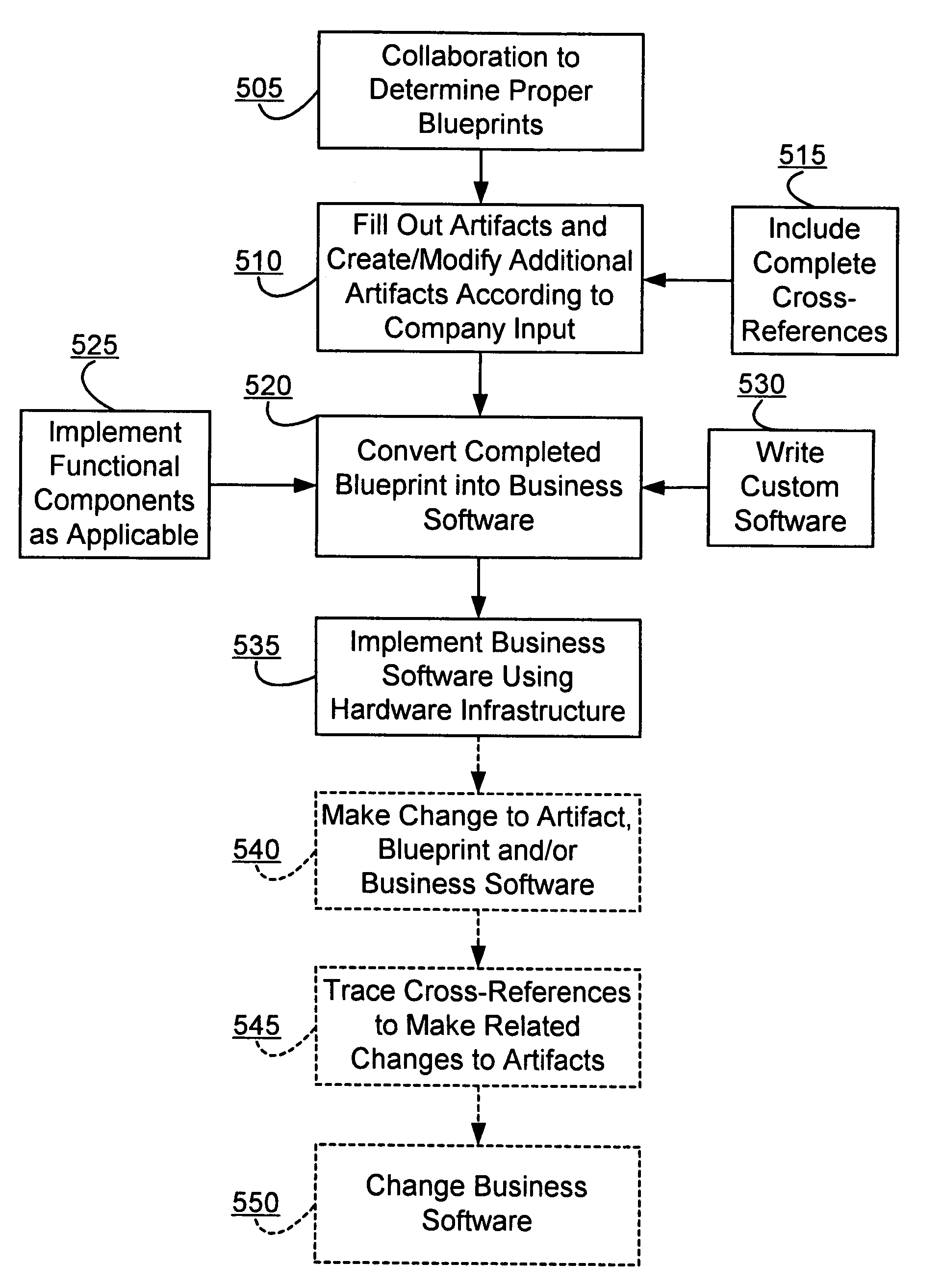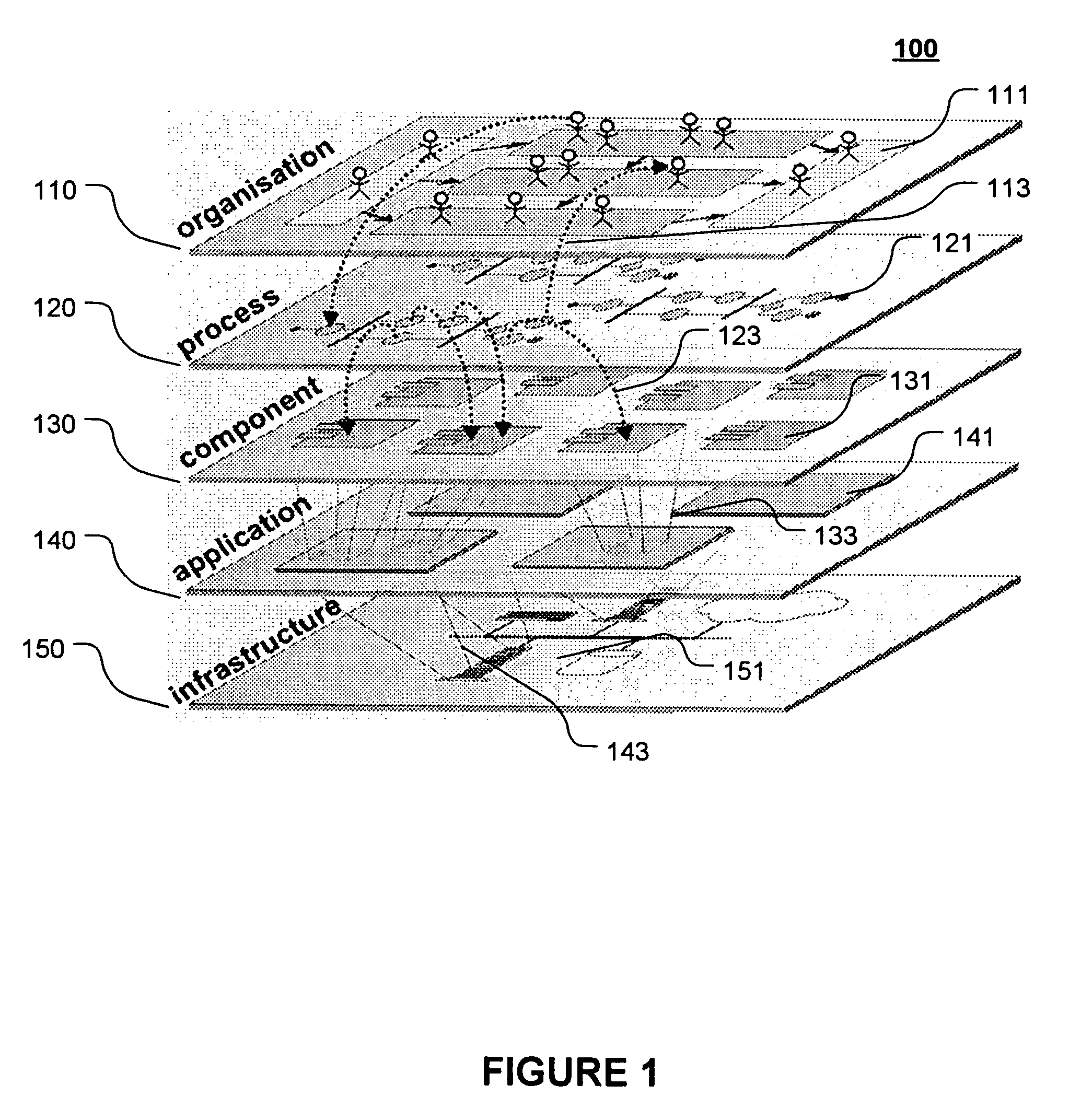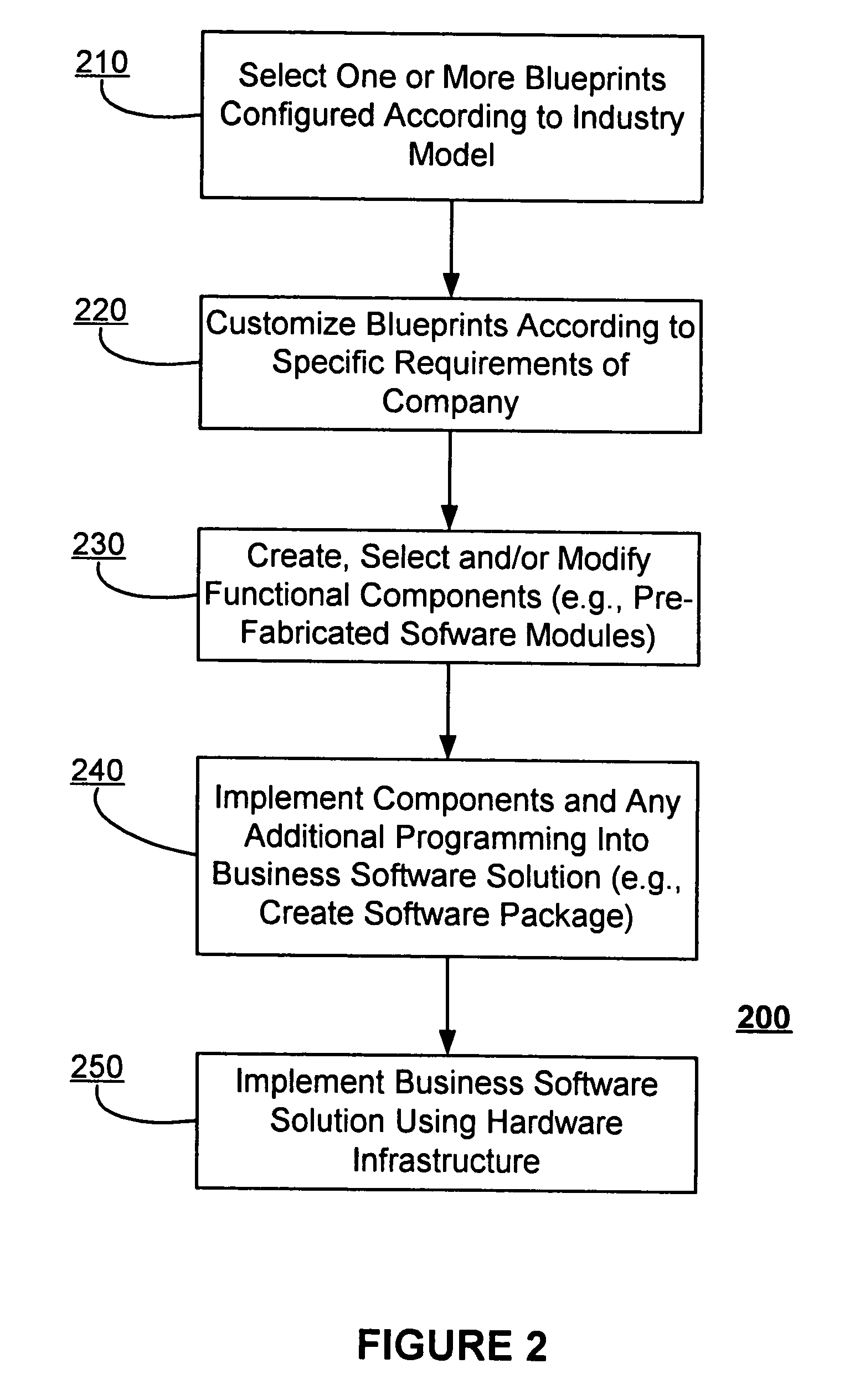System and method for using blueprints to provide a traceable software solution for an enterprise
a software solution and blueprint technology, applied in the field of software development, can solve the problems of difficult maintenance of software, difficult to make further customizations, and high customization costs of softwar
- Summary
- Abstract
- Description
- Claims
- Application Information
AI Technical Summary
Benefits of technology
Problems solved by technology
Method used
Image
Examples
example artifacts
[0066]As noted above in connection with FIG. 2, a company blueprint is comprised of cross-referenced artifacts. In addition, the artifacts may be preconfigured to describe processes that are typical for a given industry model. The following describes the types of artifacts that may be associated with a blueprint. As may be appreciated, this set of artifacts is for illustrative purposes only, as an embodiment of the present invention may include any type of artifacts.
[0067]The various artifacts may be broken down based on the various layers of an enterprise to which a given blueprint applies. These layers include:
[0068]Business Vision and Operations Model. This is a layer that businesses are just “getting a grip” on and include. For example, in the case of a financial services enterprise, the information contained in artifacts may include Exchange Pattern, Portal Pattern, Brokerage Pattern, Franchise Pattern.
[0069]Business Process Model and Patterns. Higher-level abstractions that co...
PUM
 Login to View More
Login to View More Abstract
Description
Claims
Application Information
 Login to View More
Login to View More - R&D
- Intellectual Property
- Life Sciences
- Materials
- Tech Scout
- Unparalleled Data Quality
- Higher Quality Content
- 60% Fewer Hallucinations
Browse by: Latest US Patents, China's latest patents, Technical Efficacy Thesaurus, Application Domain, Technology Topic, Popular Technical Reports.
© 2025 PatSnap. All rights reserved.Legal|Privacy policy|Modern Slavery Act Transparency Statement|Sitemap|About US| Contact US: help@patsnap.com



